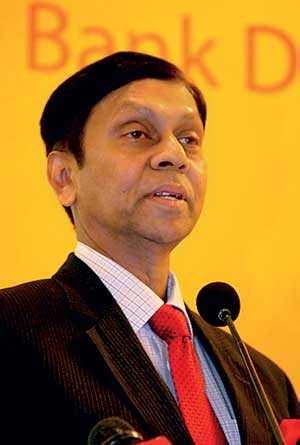Saturday Jan 10, 2026
Saturday Jan 10, 2026
Tuesday, 22 May 2018 00:00 - - {{hitsCtrl.values.hits}}
In a major media blitz on 17 May, the Central Bank has stated that it is “determined to curb unwarranted depreciation of the Rupee”, and that its gross external reserves are at a “healthy $9.1 billion”. Accordingly, it would be noted that the net foreign loans obtained by the Yahapalanaya Government amounts to almost the total quantum of the current Foreign Reserves, as could be seen from the following Table.
Accordingly, as much as $8.9 billion out of the $9.1 billion current foreign reserves of the Central Bank is made up of commercial Forex loans obtained by the Yahapalanaya Government. It therefore follows that only $0.2 billion still remains out of the foreign reserves of $8.2 Billion that existed at the time the Rajapaksa Government went out of office in early January 2015.
While it is noted that the Yahapalanaya Government has obtained its Forex commercial loans at an average interest rate of around 6.2% per annum, it is also noted that the Central Bank has been earning a net average return of only about 2.2% per annum through its international investing operations during the 3 years, 2015 to 2017. In contrast, the Central Bank had earned a net average return of around 4.5% per annum through its international investing operations during the 5 years, 2010 to 2014.
It may therefore be pointed out that the Yahapalanaya regime has borrowed high (at around 6.2%) and invested low (at around 2.2%), resulting in an interest rate gap of 4.0%, on an average reserve of around $7.0 Billion over the 3 years, 2015 to 2017. It will therefore be clear that such practice has caused the country to suffer losses of about $280 million per year, or $840 million over the 3 years.
